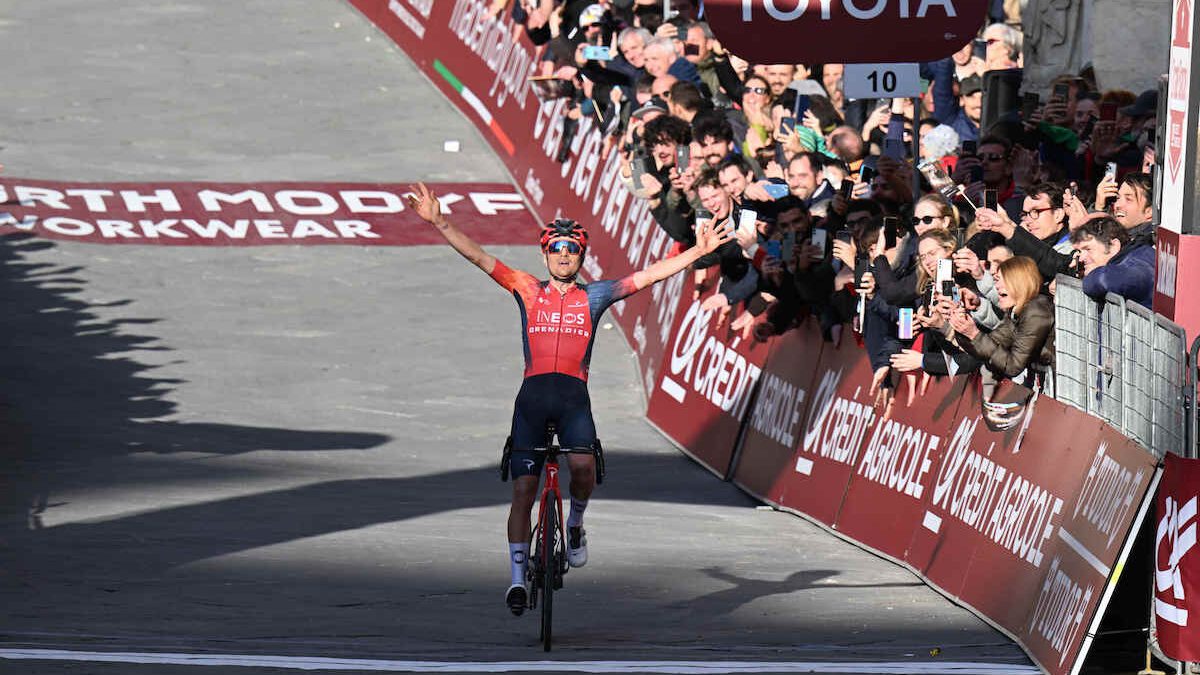Why Strade Bianche will never be a Monument
The mixed-terrain WorldTour race is very cool, but it won’t join the 5 historic races

Strade Bianche, with its picturesque gravel roads winding through the beautiful landscapes of Tuscany, has quickly become one of the most popular races in cycling. Despite the mixed-terrain WorldTour race having captured the imagination of fans, riders, and professionals alike, the question looms: why won’t it ascend to the prestigious classification? Frankly, Strade Bianche will never be a Monument
The Monuments
Cycling’s Monuments, the five historic one-day races, namely Milan-San Remo, Tour of Flanders, Paris-Roubaix, Liège–Bastogne–Liège, and Il Lombardia, stand as revered pillars of the sport. Each has a storied history, tradition, and a sense of cultural significance that has solidified their places in the books of cycling history. While Strade Bianche is undeniably a captivating and challenging race, several factors contribute to it not being classified as a Monument.
One primary reason is the relatively short history of Strade Bianche compared to the Monuments. The race made its debut in 2007, a mere blink of an eye in comparison to the venerable histories of races like Paris-Roubaix, which dates back to 1896. Monuments have stood the test of time, witnessing generations of cyclists, historical events, and evolving cycling culture. The deep-rooted heritage of the Monuments contributes significantly to their esteemed status, making it challenging for newer races to immediately ascend to that level. Some of the most famous cyclists in history—from Fausto Coppi to Eddy Merckx—have won Monuments. That’s what makes winning one of them so special—your name is now listed beside some of the greats.
The legacy
Remember that scene in “Moneyball” when Brad Pitt, playing Oakland Athletics GM, Billy Beane, goes for the interview at Fenway Park, home of the Boston Red Sox? When the owner asks why he returned his call, he says, “because it’s the Sox.” Even when Pitt steps into Fenway, his eyes light up. Like the Yankees, the team is rooted in history and has a long legacy. (Yes, I know the Athletics began in Philadelphia and later Kansas, but the Oakland version has only been around since 1968. It’s sort of like how—Sure it’s cool, and an accomplishment to wear the yellow jersey at the now-defunct Tour of California—and sure there have been some big names there—it ain’t the maillot jaune of the Tour de France.
It’s not long enough
Another aspect contributing to the Monuments’ status is the arduous nature of the races. Although organizers have added 30 km to the men’s race this year, and 1 km to the women’s, it’s still “only” 215 km and 137 km, respectively. The Monuments vary from 250 to almost 300 km, and have famously difficult factors. Think of Milan-San Remo’s length, the cobbled chaos of Paris-Roubaix, or the punishing climbs of Liège–Bastogne–Liège. They are enduring challenges that have become synonymous with the Monuments. Strade Bianche, while undeniably demanding with its gravel sections and challenging terrain, does not match the sustained brutality of the Monuments. (That being said, you could argue MSR is a slightly boring race, and despite it being almost 300 km, it all comes down to Poggio. But that’s for another think piece, another time.)
The historical landmarks of the Monuments
Furthermore, the Monuments often traverse iconic and historic landscapes, embedding themselves in the cultural tapestry of the regions they traverse. Strade Bianche’s breathtaking route through the white gravel roads of Tuscany is undoubtedly beautiful, but it lacks the historical weight and landmarks of Monuments. When someone says The Arenberg Forest, you know it’s Roubaix. The Oude Kwaremont, the Paterberg, the Koppenberg—Tour of Flanders. As mentioned, MSR has the Poggio, and Lombardy has the Muro di Sormano. When you think of Liège–Bastogne–Liège, you think of the Côte de La Redoute. Sure, the finish up to Siena’s Piazza del Campo looks incredibly difficult, but did you even know the name before I mentioned it?
Does it even matter?
Strade Bianche, though a modern classic in its own right, is yet to accumulate the history, tradition, and enduring challenges that define the Monuments. It’s still a great race to watch, and at the end of the day, does it really matter if it is classified as one? It’s still a very special race to win, and any rider to do so would be happy to have it on their palmarès.
